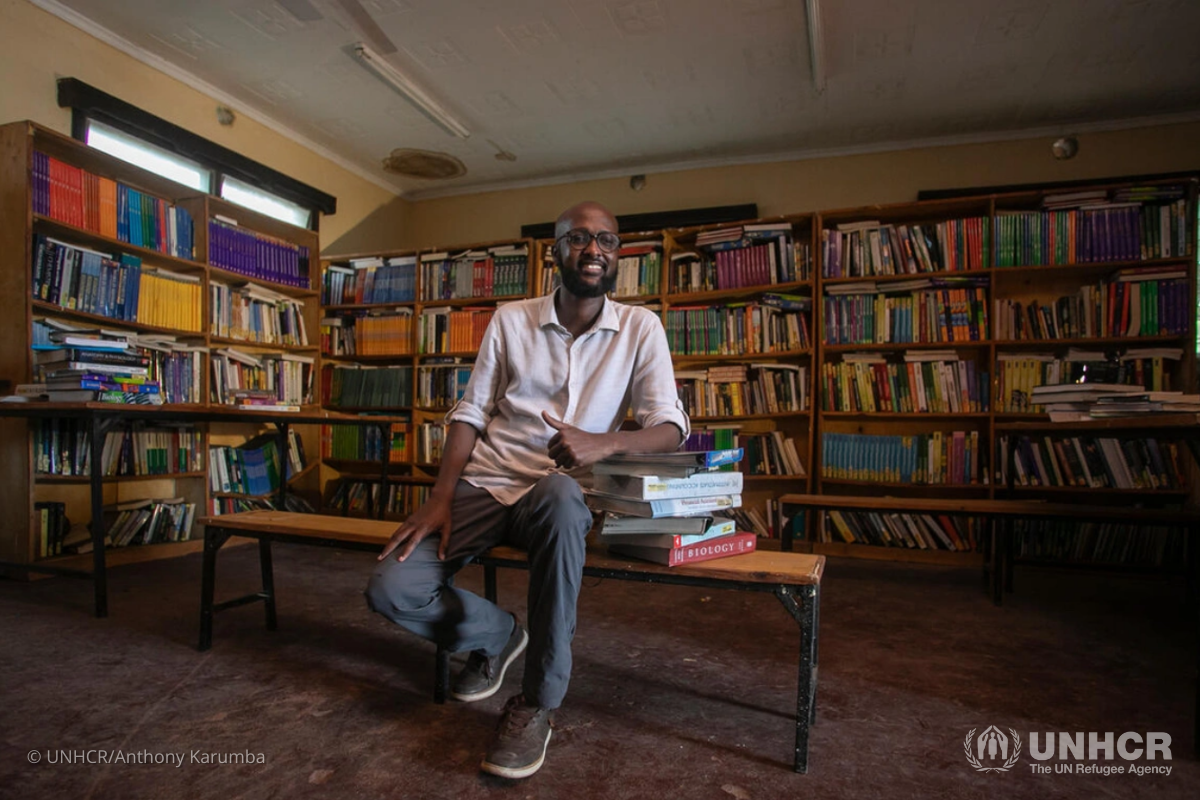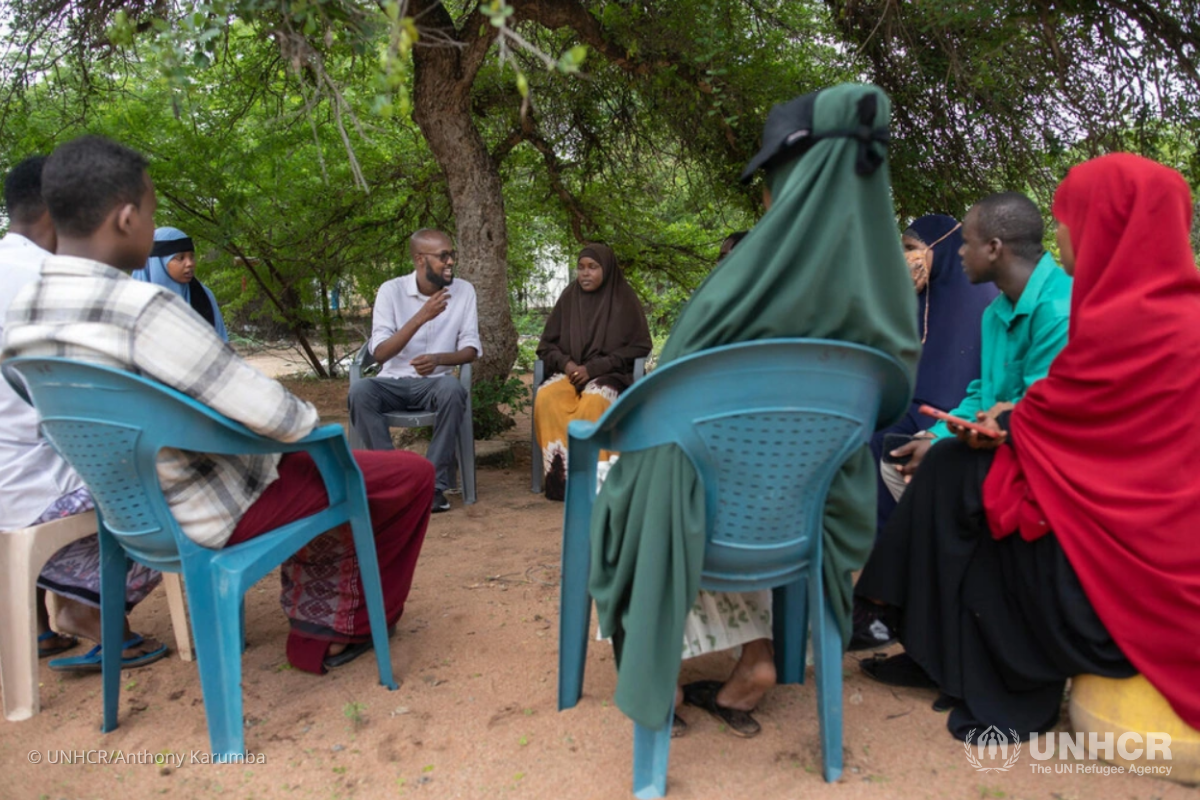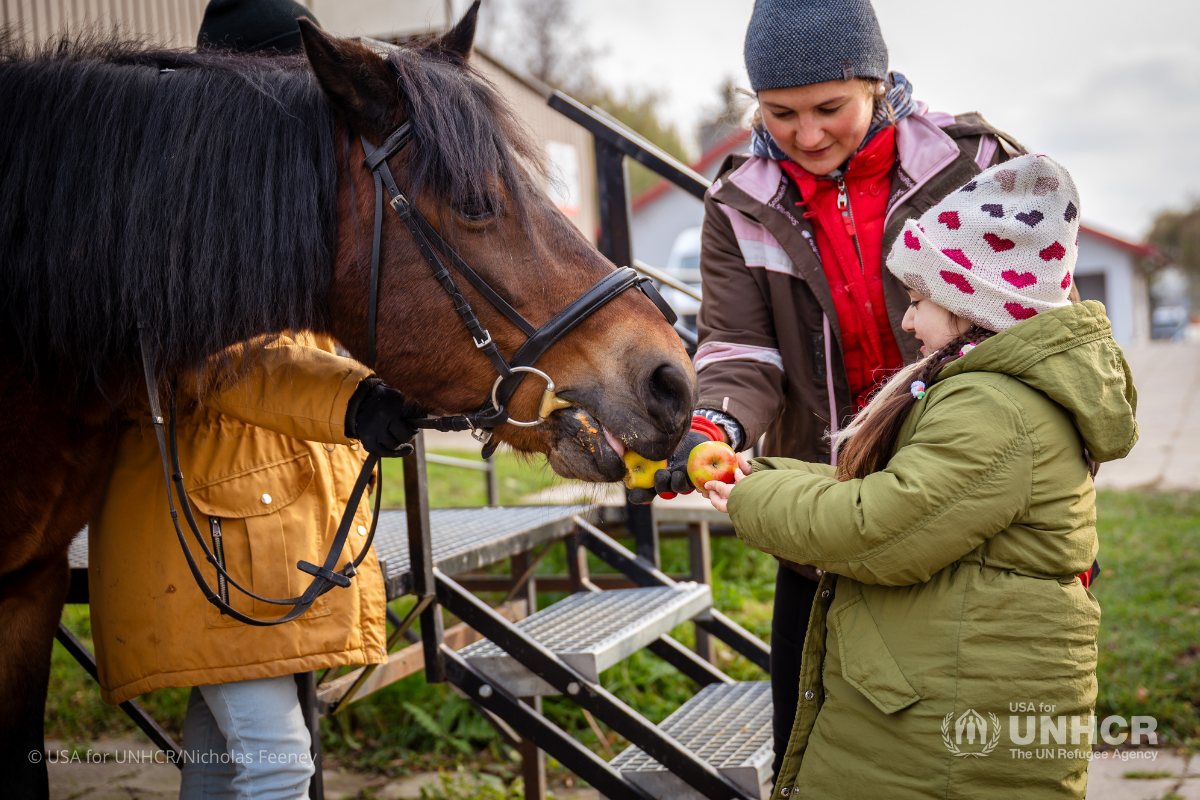According to UNHCR’s latest education report, more than half of the world’s nearly 15 million school-aged refugee children remain out of formal education.
In Dadaab, where over half the population of 370,000 refugees and asylum-seekers are children, only 58 percent attend schools in the camp due to a shortage of qualified teachers and socio-cultural barriers including early marriage.
As soon as Mire graduated from university, he began using his skills to report stories about his fellow refugees in the camp which were published by international media outlets including Al Jazeera and Agence France-Presse (AFP). “I became the voice of my community,” he says.
In 2017, while he was on a reporting assignment in Hagadera secondary school, one of the six secondary schools in Dadaab, Mire was approached by a young female student who told him about the dire need for books in the camp, particularly for girls.
“Her name was Hodan Bashir,” he says. “I remember, she was very shy but determined to tell me the challenges she was facing. She told me that her dream was to become a doctor, but the fact that she shared one biology book with 15 other girls was very disappointing.”







